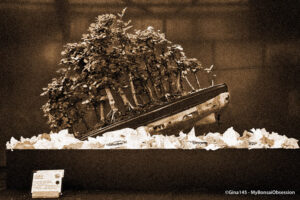
Katsura (Cercidiphyllum)
For both seedlings and cuttings, a key step to understand is that large trunks can only be reached with katsura planted in the ground.
Growth in the trunk of a tree is directly related to the volume of leaves and roots above and below ground. Large volumes require a thick layer (or growth ring) with lots of sap-channeling veins, whereas a few sparse leaves will only require growth as thick as a sheet of paper.
The time slot available for forming branches is only a couple weeks to a month every year, especially for katsura:
-For katsura, older wood is brittle and breaks easily.
-It’s very difficult to “bend” wood that is more than a year old.
-Any shaping, bending, and twisting of branches must be performed on softwood– wood that has grown in the recent weeks and is still flexible.
Working on a seed-or-cutting katsura bonsai will require alternating between the soil and the work bench for two to five years.
Katsura has a wide and shallow root network. This usually translates in difficulties when transplanting. It’s difficult to not kill an uprooted katsura. For Katsura, you’ll have to make sure soil is constantly moist. Hang a shade veil above the bonsai to protect it from harsh sun. Every time the soil dries up, leaves fall and energy is expended to make new ones. If this happens too often, the tree will drain its reserves and die. Transplanting to the final pot requires a few steps: culling the roots, cutting back unwanted main branches, and carefully preparing the pot.
Katsura tends to grow surface roots. Try to maintain this feature when preparing your bonsai.
Smaller branches are shaped in early or mid-summer, on softwood. After that, they tend to become brittle.
Make sure the pot has excellent drainage.
The key to making your Kastura tree a great bonsai is in the watering. As a bonsai, the root system is always a bit too small for comfort. Kastura is usually very vulnerable to lack of water, even when not grown as a bonsai. Learn to strike the right balance. You shouldn’t water too much, as this would trigger too much vegetation, but you shouldn’t also let it dry out too often!
Sources:



